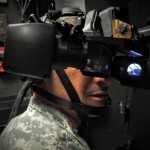
FROM THE ARMY ACQUISITION EXECUTIVE
THE HONORABLE HEIDI SHYU
Investing in S&T to confront the future threat

In October 2014, U.S. Army Training and Doctrine Command rolled out the latest Army Operating Concept (AOC), titled “Win in a Complex World.” This AOC details how the Army of the future will strengthen capabilities across multiple domains as part of a joint partnership to ensure dominance against “determined, elusive, and increasingly capable enemies.”
Simultaneously, it challenges our forces to “conduct expeditionary maneuver through rapid deployment and transition to operations.” The increasing proliferation of technologies to diverse and capable enemies means the Army must be prepared for a wider and more varied threat picture than ever before. This issue of Army AL&T explores ways the Army employs innovative solutions to ensure our continued dominance, including science and technology (S&T) investments valued at approximately $2.5 billion per year. This includes research performed in Army laboratories, individual research projects at universities, the work of university-affiliated research centers and innovations from small and large companies.
The Army funds critical S&T investments not available in commercial products to enable us to develop breakthrough products that will shape the Army of the future.

EQUIPPED FOR DOMINANCE
As night begins to fall on the desert, Pfc. Daniel Porter, an all-source analyst for the 2nd Armored Brigade Combat Team (ABCT), 1st Cavalry Division, secures his night vision optics to his Advanced Combat Helmet during a rotation at the National Training Center, Fort Irwin, California, in February. Both the optics and the helmet are products of extensive research in Army labs. (U.S. Army photo by Staff Sgt. John Healy, 2nd ABCT Public Affairs)
I will highlight two examples in Army aviation: the Improved Turbine Engine Program (ITEP) and the Degraded Visual Environment Mitigation (DVE-M).
STRONGER ENGINE, SAFER FLIGHT
ITEP, featured in the October – December 2012 issue of Army AL&T, will produce a new class of turboshaft engine that will replace the current T700 class engine for the UH-60 Black Hawk and AH-64E Apache, which together make up 70 percent of the total Army helicopter fleet. The current T700 engine originated in the 1970s and no longer retains significant potential for power growth to meet new requirements and increased aircraft weight. The Improved Turbine Engine will fit within the current engine nacelle of the UH-60 and AH-64 at similar weight, offering a 50 percent improvement in shaft horsepower and functionality in high-temperature environments around the globe.
Degraded visual environments are responsible for a large majority of Army aviation accidents over the past 10 years. Operating in DVEs was described in an article in the July – September 2012 issue of Army AL&T as a top priority in S&T. The inability to operate safely in DVEs has had a significant impact on tactics, techniques and procedures employed to support the ground force. The Army’s DVE-M program addresses the loss of vertical lift aircraft and the occupant injuries resulting from a lack of situational awareness under various DVEs. Achieving the capability to conduct missions in such conditions will grant a significant tactical advantage by enhancing the safety and effectiveness of Army operations. Just as breakthroughs in infrared technologies allowed the U.S. military to “own the night,” DVE-M will enable us to “own the weather.”
The multidisciplinary DVE-M S&T research explores the trade space between flight controls, sensors and cueing, and will enable Army aviators to safely fly in white-out, brown-out, rain, fog, clouds, smog or darkness. The long-term goal is to provide Army aviation the ability to conduct operations 24/7, 365 days a year regardless of weather and environmental conditions.

BEYOND OWNING THE NIGHT
The Army is preparing to introduce the Enhanced Night Vision Goggle III (ENVG III), with fielding to begin in 2017. Worn on a helmet like earlier models, the ENVG III can be wirelessly linked to the Family of Weapon Sights Individual, which is mounted on small-arms weapons. The ENVG III is the latest technological breakthrough enhancing the U.S. military’s established ability to own the night. (Image courtesy of Program Executive Office for Soldier)
RESEARCH LEADS INNOVATION
Another example of the Army’s commitment to investing in innovative technologies is our laboratories. In 16 Army laboratories across the country, nearly 12,000 scientists and engineers perform research that is vital to our Soldiers. In our labs, these scientists and engineers work on projects covering a wide variety of technological innovations that address the challenges facing the Army around the world.

WEATHER OR NOT
New York Army National Guard Lt. Col. Kevin Ferreira, operations officer for the 42nd Combat Aviation Brigade, conducts a simulated flight during training in June at Fort Drum, New York. The goal of Army S&T research into DVE-M is to provide Army aviation the capability to conduct operations 24/7, 365 days a year regardless of weather and environmental conditions. (U.S. Army National Guard photo by Sgt. J.P. Lawrence)
These projects range from basic research in materials to applied research focused on solving specific military problems to advanced technology development demonstrating technical feasibility at the system or subsystem level. Examples of these technology projects include advancements in lighter and stronger armor, next-generation night vision goggles, directed-energy weapons, nontraditional ground-vehicle survivability demonstrators optimized for occupant-centric protection, reducing operational energy consumption and Soldier load, optimizing training with live-virtual-constructive simulation, and medical research in support of care for traumatic brain injuries and rehabilitation for wounded warriors.
CONCLUSION
In order to win in an increasingly complex and uncertain world, we must have the capabilities to address the full spectrum of potential threats, from countering terrorism to helping partner nations counter nation-state threats. This entails rapidly developing and fielding a broad portfolio of capabilities that will enhance our mobility, survivability, situational awareness and lethality in different environments.
Winning in an uncertain world is no small task. However, the Army has repeatedly risen to great challenges in its 240 years. With our focus on nurturing innovative S&T to enable the next generation of dominant capabilities and our strong partnerships with the commercial and defense industrial base, the Army is prepared to rise to tough challenges. Armed with this commitment to innovation and partnership, we will keep our forces Army Strong.

FROM THE LAB, FOR THE SOLDIER
The Concept for Advanced Military Explosion-Mitigating Land Demonstrator (CAMEL) was on display at the Pentagon during DOD Lab Day May 14. CAMEL shows how research by the U.S. Army Research, Development and Engineering Command (RDECOM) on improving blast protection in vehicle platforms considers the occupant first and offers lessons learned for the development of future military vehicle platforms. CAMEL is also but one example of how Army laboratories are investing in innovative technologies, and how Army scientific and engineering efforts enable Soldiers on the battlefield to have technological overmatch. (U.S. Army photo by Conrad Johnson, RDECOM Public Affairs)
This article was originally published in the October – December 2015 issue of Army AL&T magazine.
Subscribe to Army AL&T News, the premier online news source for the Acquisition, Logistics, and Technology (AL&T) Workforce.
![]() Subscribe
Subscribe







